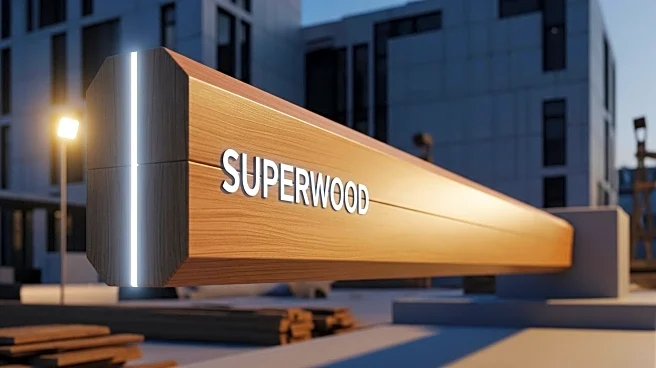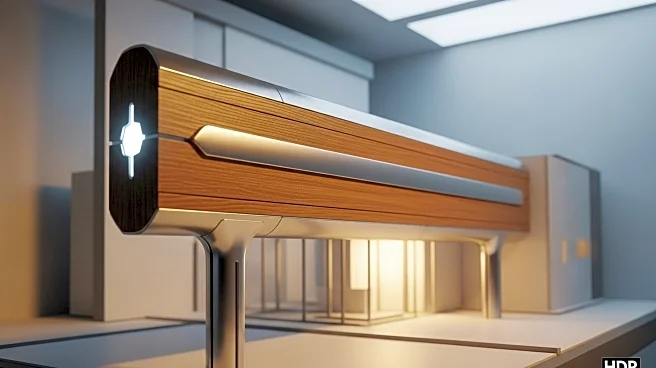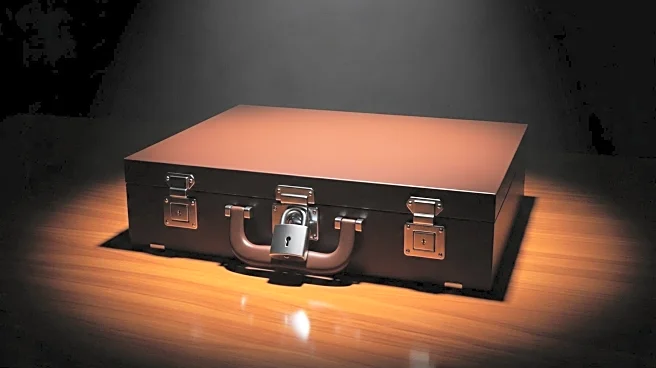What's Happening?
InventWood, a Maryland-based company, has launched a new product called 'Superwood,' which boasts a strength-to-weight ratio up to 10 times greater than steel while being significantly lighter. The development of Superwood is the result of over a decade of research led by material scientist Liangbing Hu, who initially strengthened wood by chemically treating it to enhance its natural cellulose. The process involves boiling wood in a chemical bath and hot-pressing it to collapse its cellular structure, resulting in a denser and stronger material. Superwood is manufactured in Frederick, Maryland, and is currently being produced for external applications like decking and cladding, with plans to expand to internal uses such as wall paneling and furniture. The company aims to eventually construct entire buildings using Superwood, although further testing is required.
Why It's Important?
The introduction of Superwood has the potential to significantly impact the construction industry by offering a sustainable alternative to traditional building materials like steel and concrete. Superwood's strength and lightweight properties could lead to more earthquake-resistant structures and faster construction processes. Additionally, its production emits 90% less carbon compared to steel manufacturing, aligning with global efforts to reduce carbon emissions. As timber construction gains popularity, Superwood could further promote the use of wood in building projects, contributing to long-term carbon storage and environmental benefits. However, the construction industry's risk aversion and slow adaptation to new materials may pose challenges to widespread adoption.
What's Next?
InventWood plans to scale up production and expand the applications of Superwood to include internal building components and furniture. The company is focused on making Superwood competitive with steel in terms of cost and performance. As the construction industry becomes more familiar with engineered wood products, regulatory frameworks and pilot projects may be necessary to facilitate broader acceptance. The potential for Superwood to replace metal fasteners and joints in furniture could also lead to more durable products. Continued research and testing will be crucial to achieving these goals and demonstrating the material's viability for large-scale construction projects.
Beyond the Headlines
The development of Superwood highlights the ongoing innovation in material science aimed at addressing environmental challenges. By altering wood at the molecular level, InventWood has created a product that not only competes with traditional materials but also offers ecological benefits. The success of Superwood could inspire further advancements in sustainable building materials, encouraging architects and builders to explore new possibilities in design and construction. As cities seek to reduce their carbon footprint, materials like Superwood could play a pivotal role in achieving these objectives.












